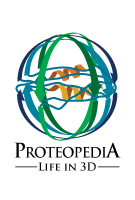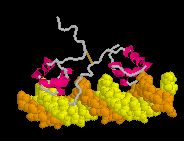Protein 3D Structure Visualization & Structural Bioinformatics
Part of the Applied Molecular Biotechnology MS Program, Dept. Microbiology,
University of Massachusetts, Amherst.
2019: Mondays and Thursdays, January 7, 10, 14, 17 in Fine Arts Center 444.
1:00 to 4:00 PM each day.
Bringing A Laptop Computer Is Encouraged
but not required (lab mac & windows computers are available).
Taught by Eric Martz* and Jeffrey Kane.
*principal author of FirstGlance in Jmol and MolviZ.Org,
team member of Proteopedia.Org, and coauthor of the ConSurf Server.
*Professor Emeritus, University of Massachusetts, Amherst -- Morrill IVN 422B --

This syllabus is on-line:
Workshops.MolviZ.Org






 mRNA
mRNA 







